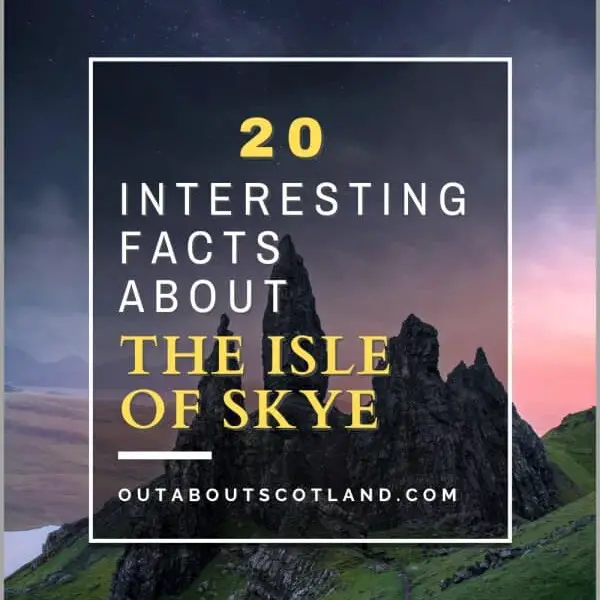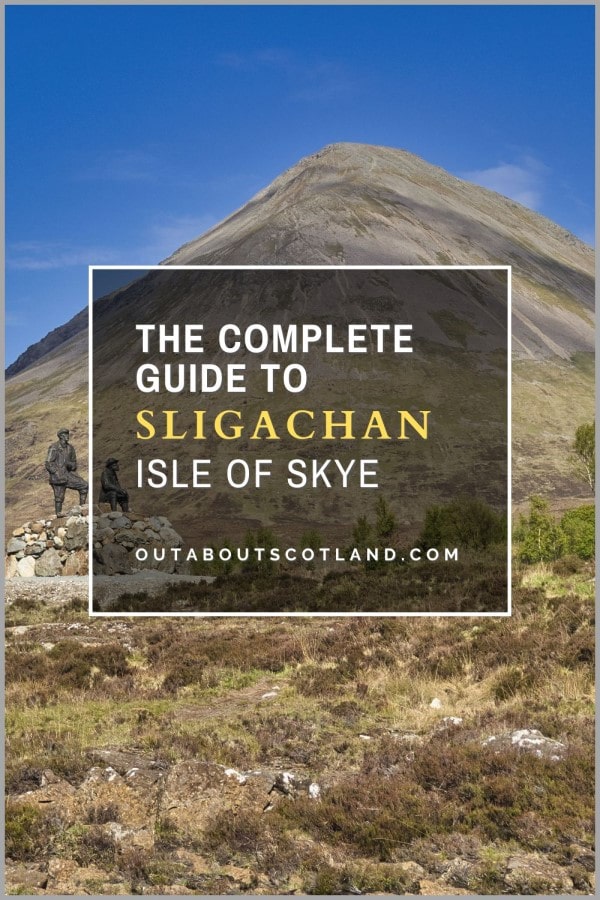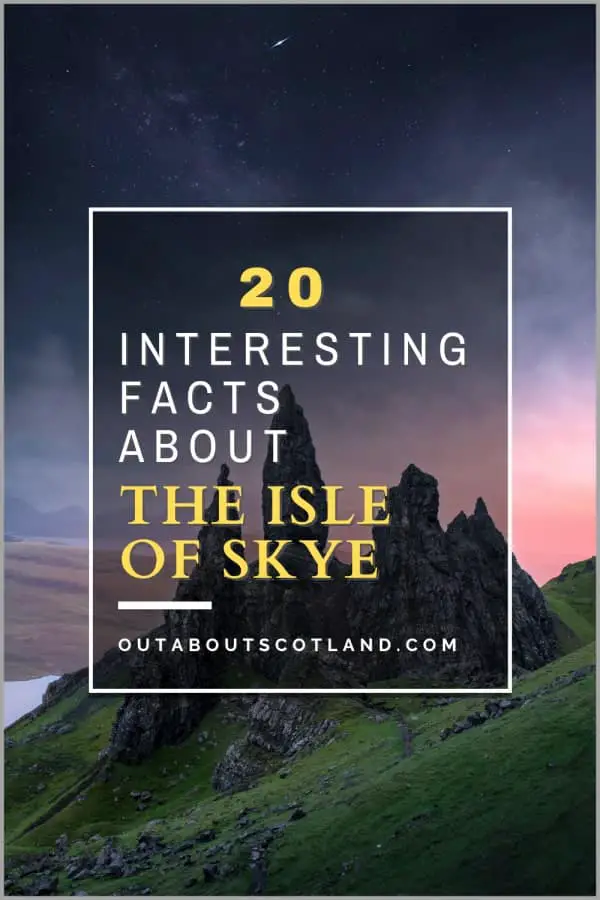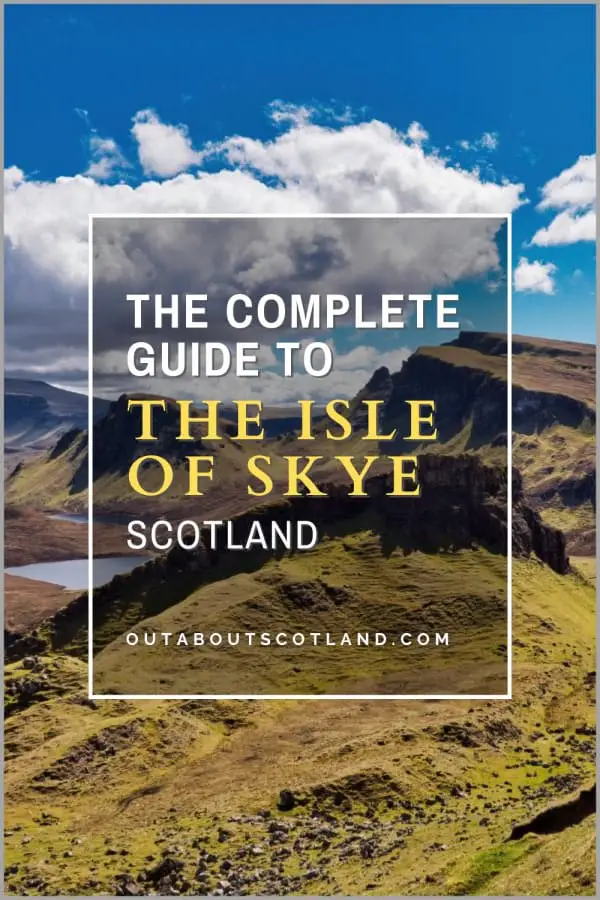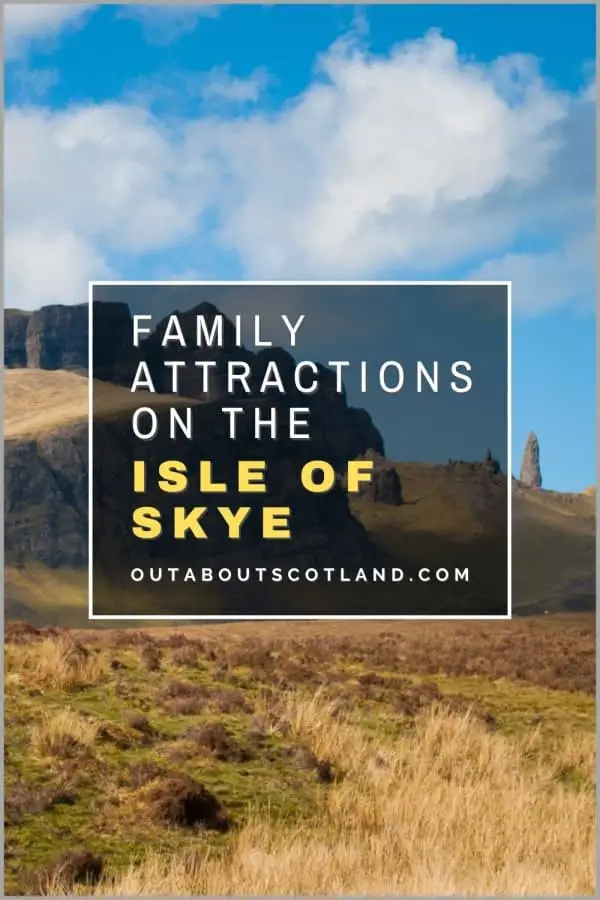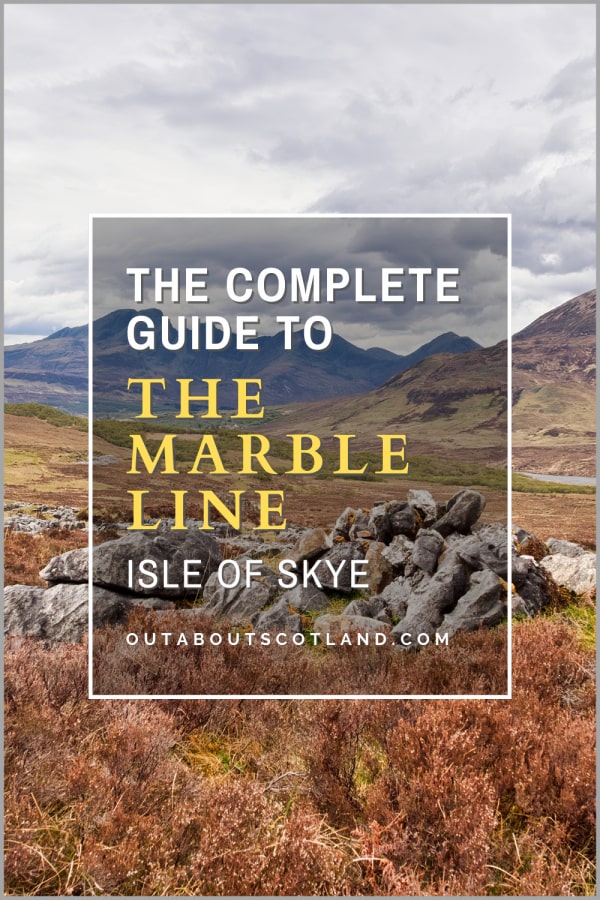The Isle of Skye is one of Scotland’s most popular tourist destinations thanks to its breathtaking scenery, pretty coastal villages, incredible wildlife, and near-limitless opportunities for enjoying the great outdoors. In this article, discover 20 amazing facts about the Isle of Skye that will hopefully surprise you and maybe even encourage you to book a trip to see this amazing island for yourself.
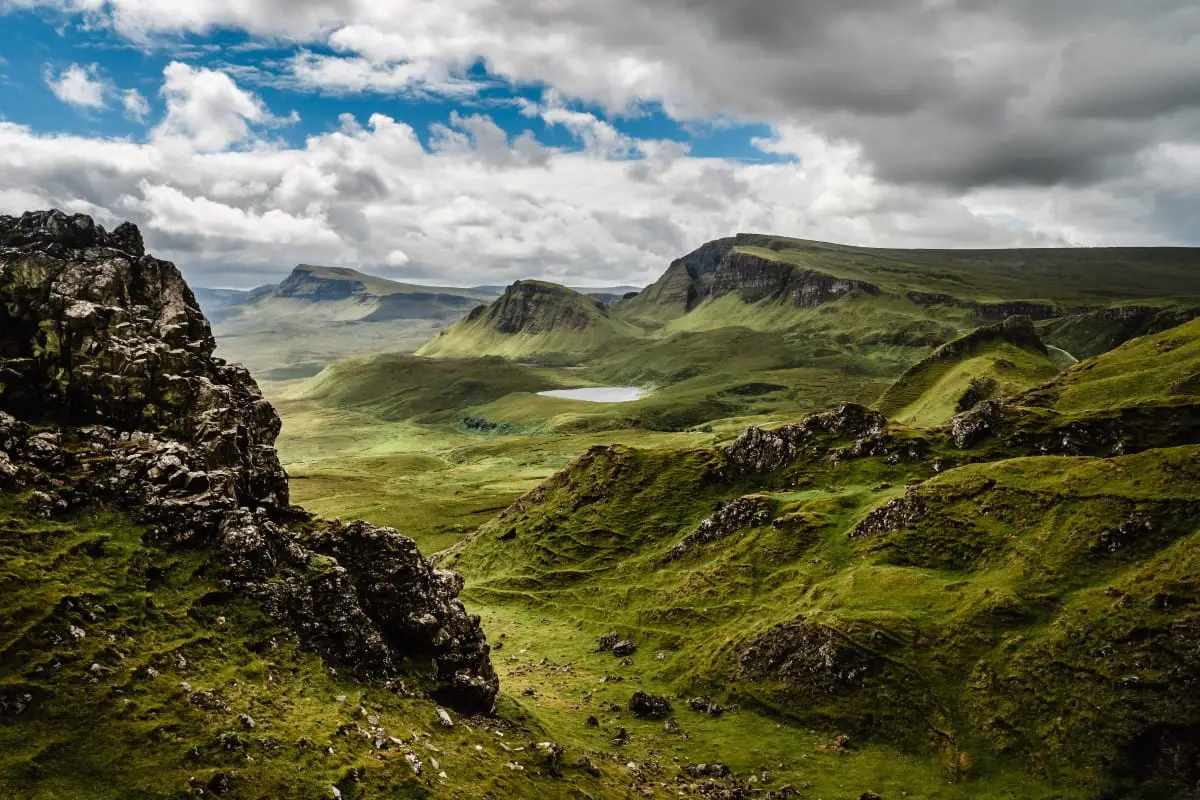
Facts About the Isle of Skye
There’s so much more to Skye than the photos you see adorned on boxes of shortbread everywhere you look in Scotland’s gift shops. Yes, places like the Fairy Pools and the Quiraing are drop-dead gorgeous, but they make up a tiny fraction of all the wonders you can see on this stunning west-coast island.
From the wild and unspoilt moorland of the Sleat Peninsula to the almost-within-touching-distance islands of Raasay and Scalpay, Skye is chock-a-block full of places to visit.
It’s no surprise that with so much scenery just a short drive from the mainland the island has now become something of a victim of its own success, and many of its narrow single-track roads are routinely clogged with luxury mega-coaches in the peak summer season. However, visit a wee bit earlier or later in the year, and you’ll discover an island that’s full of towering mountains and peaceful glens where it’s still possible to go for an all-day hike and barely see another person.
It would be impossible to discuss everything that makes this island such a special place in one article, but I’ve included a list of 20 facts about the Isle of Skye that will hopefully give you a good overview,especially if you’ve never visited before.
General Facts About Skye
1. As the second-largest island in Scotland (Harris and Lewis is the biggest), the Isle of Skye has plenty of space for tourists to roam around, but most visitors fail to realize just how big this west-coast island actually is. Skye is around 50 miles (80 km) long and 25 miles (40 km) at its widest points, which means it has a total area of 639 square miles (1,656 square km)—5 times bigger than Malta, 4 times bigger than Barbados, and 3 times bigger than Ibiza.
2. Skye is a popular tourist destination for hill walkers thanks to the rocky peaks of the Black and Red Cuillin mountains. Adventurers willing to explore the Black Cuillin’s need to be well-prepared for what is widely regarded as the most difficult mountain ridge in Britain, which includes the infamous ‘In Pin’.
The In Pin (AKA the Inaccessible Pinnacle) is an outcrop that soars 50 metres above the highest point of the Sgurr Dearg mountain, and it is the only Munro in Scotland that requires technical rock climbing skills to reach the summit.
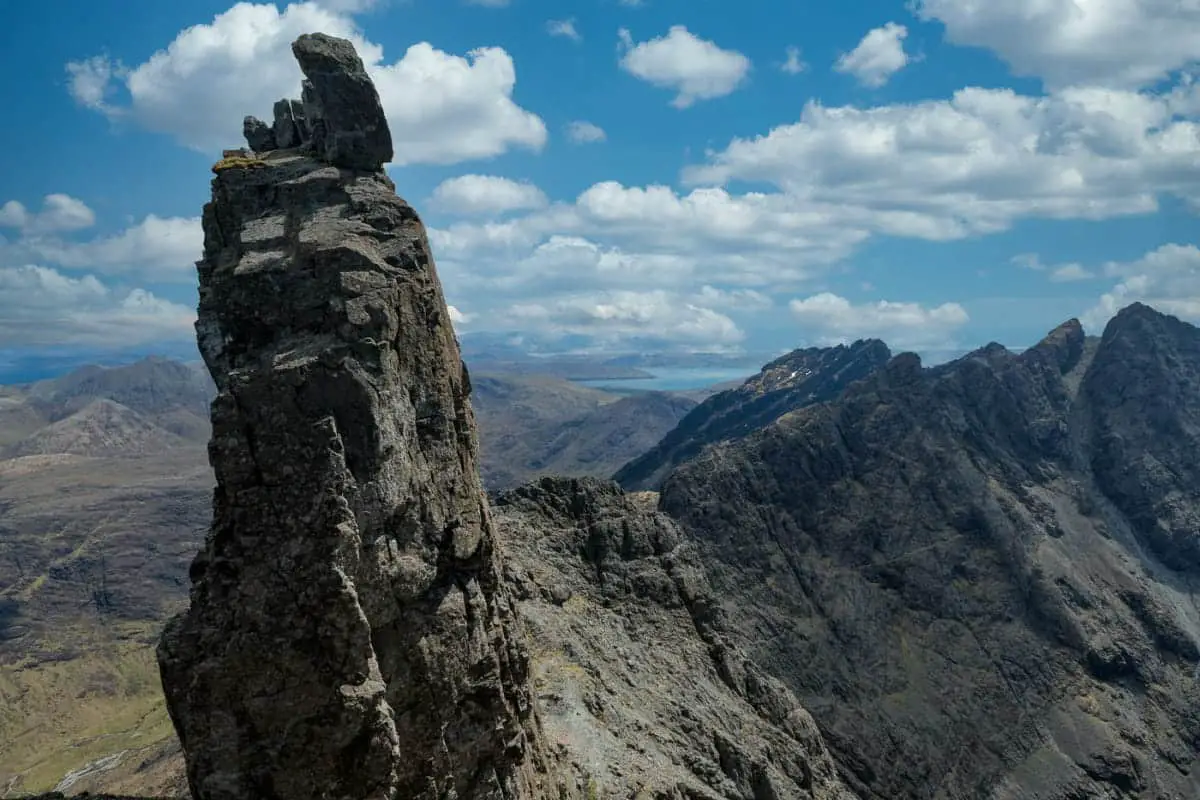
3. Natural wonders like the In Pin attract hundreds of thousands of tourists every year, and current numbers average 650,000 annual visitors, although that’s far behind Edinburgh’s eye-popping 5 million sightseers. It’s a sad fact that tourism on Skye is starting to become unsustainable, as can be seen at the Fairy Pools, which attracted 180,000 visitors in 2019, which is a 14x increase from the 13,000 visitors the pools welcomed in 2006.
4. One aspect of Skye that might drive visitors away is the climate, after all, it’s not known as ‘the misty isle’ for nothing. Even during July in what is generally the warmest month for Scotland’s west coast islands, Skye sees an average temperature of just 13 °C (55 °F).
Autumn and winter can be pretty miserable for anyone that’s unprepared for wet weather but two months, in particular, are best avoided. In January and October the average amount of rainfall is 150 mm, which is twice the amount of rain you can expect during a visit to Edinburgh at the same time of year.
5. The number of permanent residents on Skye is a fraction of the number of tourists who come to the island throughout the year, with tourists outnumbering locals by an astonishing 55 to 1! There are currently around 12,000 people living on Skye full-time, and the majority live in the villages dotted around the coastline. Of all the villages on the island, the most populous is Portree, which is home to around 2,500 people.
Historic Facts About Skye
6. There has been a settlement at Portree since at least the early Bronze Age (2500 BC), and stone tools have been uncovered that date as far back as the latter part of the Stone Age (4000 BC). Historians don’t know what those earliest settlers called their home, but they do know that it was called Cill Targhlain from the time of the Vikings up to the 16th century. The current name is believed to derive from the Gaelic ‘Port Ruighe’, which translates to ‘King’s Port’, possibly in reference to a visit by King James V in 1540.
7. There are too many attractions on Skye to include in one article, but a firm favourite with tourists is the Old Man of Storr. The Storr is a 160-foot (48-metre) stone pinnacle that sits on the remnant of an ancient landslide on the Trotternish Peninsula a few miles north of Portree.
This huge rock stands clear of the surrounding cliffs at an elevation of 2,360 feet (719 metres) and is clearly visible for miles around. An ancient legend says the Storr is, in fact, the remains of a giant who was buried with his thumb sticking out of the ground. Another Skye legend says it’s a very different, exclusively male, appendage that’s poking out…
8. Skye has a rich mythology that’s no doubt inspired by its breathtakingly beautiful landscape. Aside from giants, other mythological creatures rumoured to live on the island are fairies and selkies (seal folk that change from human to seal form by shedding their skin). There are more tales of magical beasts on Skye than anywhere else in Scotland, but there are two places that have become synonymous with them.
The Fairy Pools were supposedly given the name after one of the chiefs of Clan MacLeod married a fairy princess there, and there’s a myth that selkies used to travel to the pools to change their form under the light of the full moon.
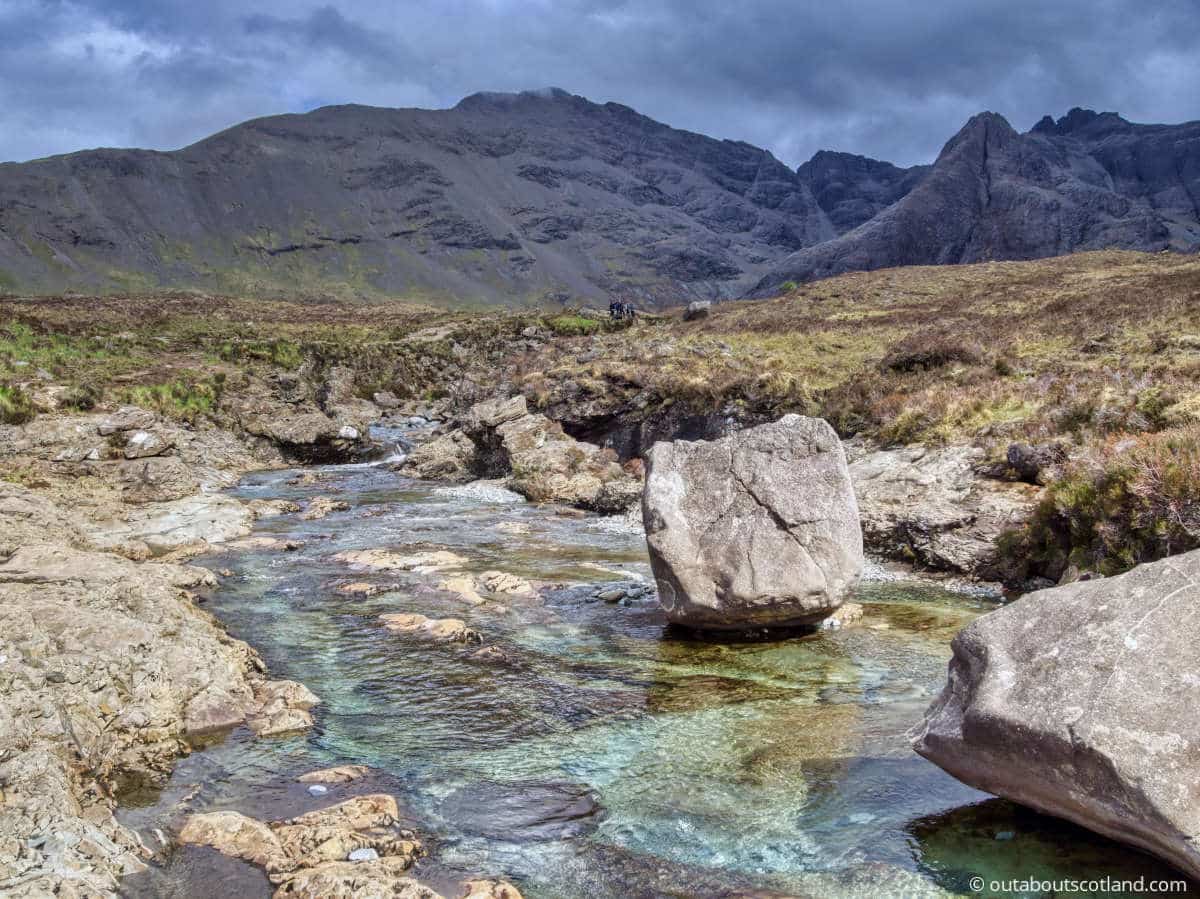
The Fairy Glen, meanwhile, is a supernatural-looking landscape where weather erosion has created a series of strange conical hills to the west of the Trotternish Ridge. Tales of fairies at the Glen date to prehistoric times when, unlike today, they were believed to be evil.
9. The ancestral home of Clan MacLeod is Dunvegan Castle which sits on a rock outcrop overlooking the shore of Loch Dunvegan in the northwest region of Skye. This stunning castle is part of a 42,000-acre estate that encompasses mountains and low-lying grasslands in an area that has been classifiedied as a Site of Special Scientific Interest.
The castle itself is one of Skye’s top tourist attractions, but perhaps its main claim to fame is the fact that it’s the oldest continually-inhabited house in the United Kingdom, having served as the home of the MacLeods for over 800 years.
10. The MacLeods have seen many generations of crofters on Skye and it’s still a widespread practice today. Crofting is a traditional way of farming where a tenant farmer rents a small piece of land (typically 2-5 hectares) from a landowner and uses it to raise animals or grow vegetables.
The crofting way of life is unique to the Scottish Highlands and islands and though the number of crofters has plummeted since its heyday in the 18th century, the Isle of Skye is one of the few places where new crofting sites are being created, such as the Gillean Township on the Sleat Peninsula.
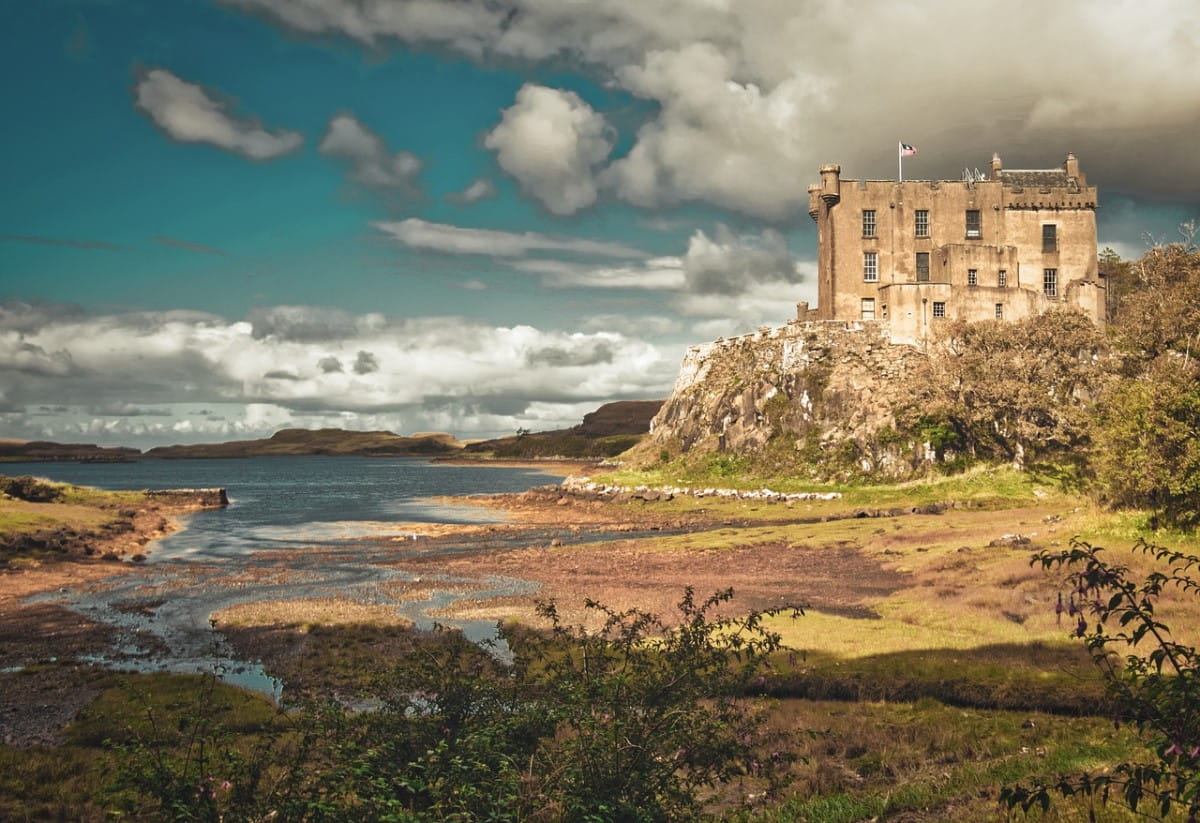
Facts About Skye’s People
11. There are far fewer people living on Skye now than there were in the 1700s and 1800s for two reasons. The first was the forceful eviction of tenant farmers after the Jacobite rebellion of 1745.
In the aftermath of the Jacobite defeat at Culloden, the government set out to punish the remaining Jacobite strongholds by taking away the rights of crofters. This forced them to emigrate by the tens of thousands to the US, Canada, and Australia.
The Highland Potato Famine of 1846–1856—when blight decimated potato crops—was what sparked the second significant migration from Skye. This forced even more islanders to emigrate, which led to a slow decline in the population right up until the 1970s.
Thankfully, this decline has stopped and the population is now slowly increasing.
| 1821 | 1841 | 1881 | 1891 | 1931 | 1951 | 1961 | 1971 | 1981 | 1991 | 2001 | 2011 |
| 20,827 | 23,082 | 16,889 | 15,705 | 9,908 | 8,537 | 7,479 | 7,183 | 7,276 | 8,847 | 9,232 | 10,008 |
12. Aside from cropping, another industry that declined rapidly in the 1800s was marble mining. Skye has the only true seam of marble in the United Kingdom, with a rich seam located at the foot of the Red Cuillin mountains in the Sleat Peninsula.
At its peak, Skye marble was transported all over the world, and demand was so high that a railway line had to be built from the mine to the coastal village of Broadford in order to keep up with demand.
As with many island industries, the demand for Skye marble eventually collapsed, and the railway line was abandoned. However, tourists can follow the route of the old railway line thanks to the efforts of the local community, whichch hasremoved the track and turned it into a footpath.
Facts About Skye’s Landscapes & Animals
13. The Red Cuillin Mountains take their name from the red colour of the granite rock, which takes on a reddish hue from some angles. These mountains are smaller than the Black Cuillin’s, with a maximum height of 2,540 feet (775 metres), which means they’re classified as Corbetts (mountains under 3,000 feet).
The Black Cuillin mountains lie to the east of Glen Sligachan and take their name from the almost black colour which can be seen when they’re in shade. Unlike the red cuillin, the black cuillin iscomposed of an igneous rock called gabbo, in addition to some sections that are comprised of basalt. Their highest peaks sit around the 3,200-foot mark, which means they are classified as Munros.
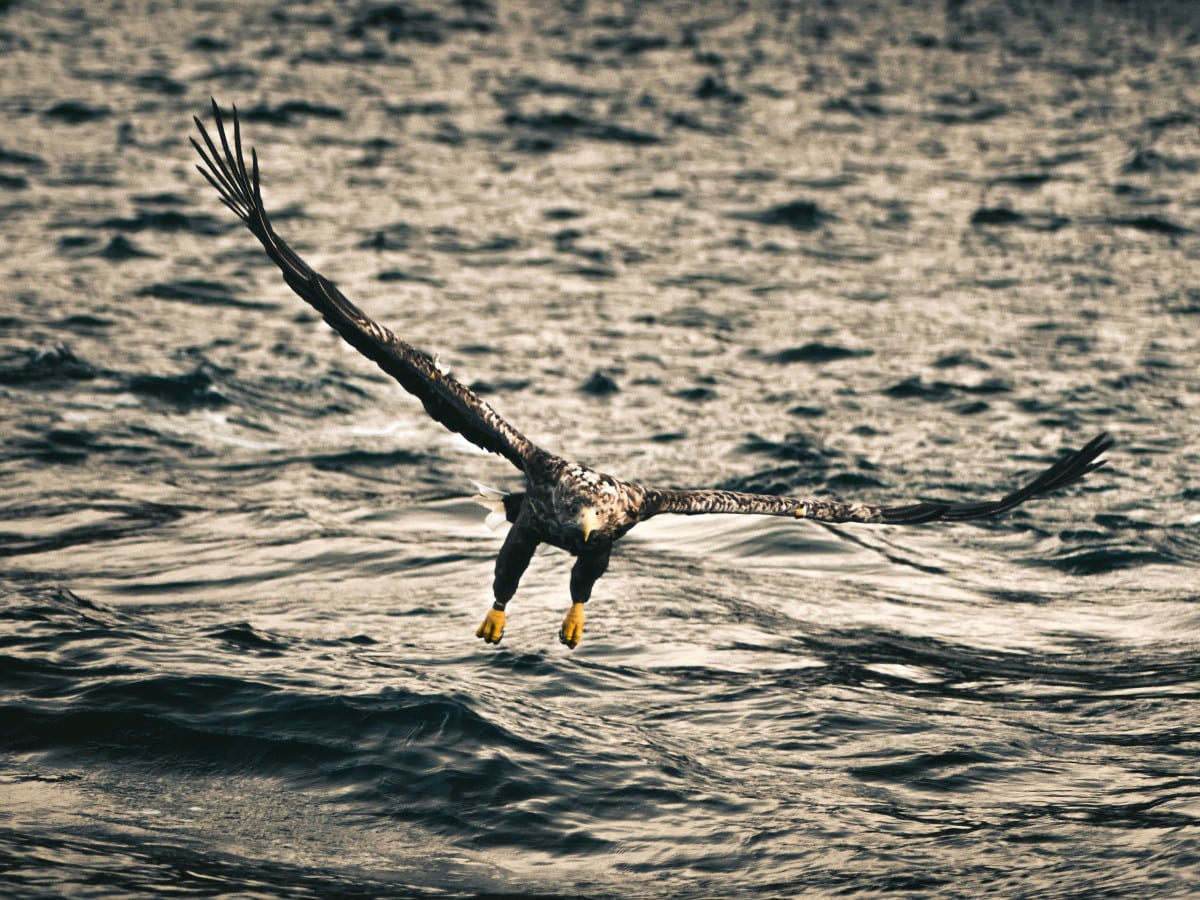
14. While exploring the Cuillin mountains you may be lucky enough to catch a glimpse of a rare bird that is making a comeback in Scotland – the white-tailed sea eagle. This majestic animal is Britain’s largest bird and has an 8-foot wingspan, whichh has led to its nickname ‘the flying barn door’.
They were sadly driven to extinction in Scotland by farmers and gamekeepers during the Victorian era, but a successful reintroduction programme has seen their numbers hold steady in places like Skye which has tall cliffs with lots of crevices where they can build their nests. There are currently 16 pairs of sea eagles on Skye, along with 29 pairs of their cousins, the golden eagle.
15. Aside from sea eagles, another type of rare animal that can be seen on Skye is – dinosaurs. Well, not alive ones, obviously, but there are lots of places where you can see fossilized footprints. The Isle of Skye is one of the few places in the world where you can find fossils from the Middle Jurassic period, and fossilised remains have been found that include stegosaurus, long-necked sauropods, and even a few relatives of the ferocious Tyrannosaurus rex.
There are two places where visitors can follow in the footsteps of dinosaurs. The first is An Corran beach near Staffin on the northeast corner of the island. The beach has a number of three-toed footprints that belong to a family of ornithopods (two-legged herbivores).
The second dinosaur-spotting site is Score Bay on the northwest coast of Skye, which is home to the largest dinosaur tracks in Scotland. Prehistoric animals with close ties to brontosaurs and diplodocus left these footprints.
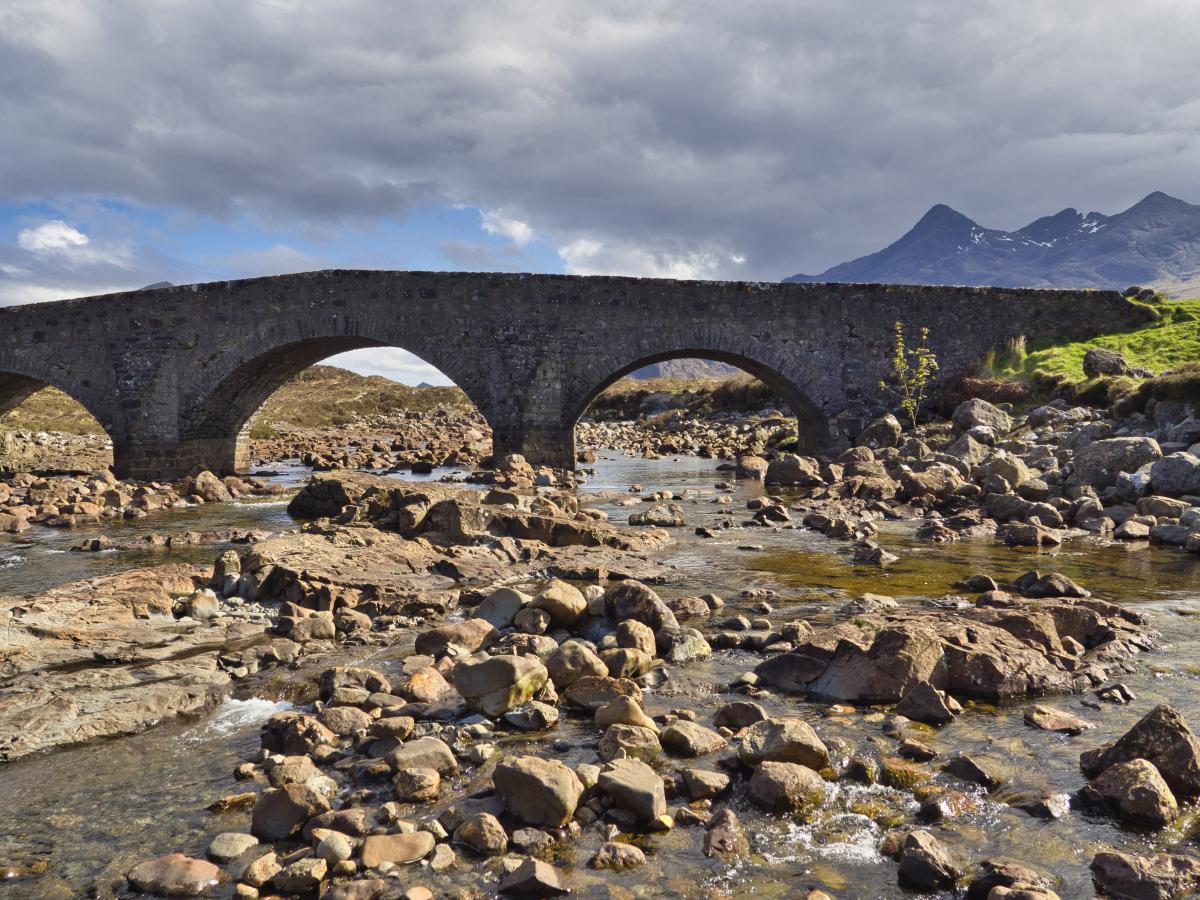
16. One of the most scenic places on Skye is Sligachan, a relatively flat (for Skye) area of moorland that’s backed by the dramatic Black and Red Cuillin’s near Loch Sligachan. The Old Sligachan Bridge, one of Scotland’s most famous structures, spans the River Sligachan, which feeds the loch.
Snapping the arches of the bridge with the Cuillin mountains in the background is a bit of a must-do for photographers, but it’s also a popular spot for people to test one of Skye’s oldest legends. It’s said that the water that flows under the Sligachan bridge is a gateway to the world of the fairies, and anyone who dips their head into it for 7 seconds will be granted eternal beauty.
17. Another bridge that’s less attractive but is visited more than the one in Sligachan is the Skye Bridge which joins Kyle of Lochalsh on the mainland to Kyleakin on the island. Prior to the bridge opening in 1995, visitors to Skye had to make use of ferries between the two villages, with the earliest recorded service known to have been running as far back as the 1600s.
When the bridge finally opened it began a new chapter for Skye’s tourism, but it came at an eye-watering cost with toll charges that were 14 times more than Edinburgh’s much longer Forth Road Bridge.
At the time, a return crossing cost car drivers £11.40, while trucks had to hand over £55.80 for the privilege of crossing the bridge. Unsurprisingly, a campaign to lower the toll began soon after it was introduced, which successfully led to the bridge being made free to cross in 2004.
18. Skye’s incredible landscape is just one reason it’s one of Scotland’s go-to locations for moviemakers, but perhaps more important than the scenery is the fact the Scottish government offers big tax breaks to film production companies.
Across Scotland, TV and film productions bring more than £45 million to the economy each year, and a good chunk of that money comes from the productions filmed on Skye. Some big-name movies shot on Skye include Prometheus (2012), King Arthur: Legend of the Sword (2017), Transformers: The Last Knight (2017), Outlaw King (2018), Macbeth (2015), and 47 Ronin (2013).
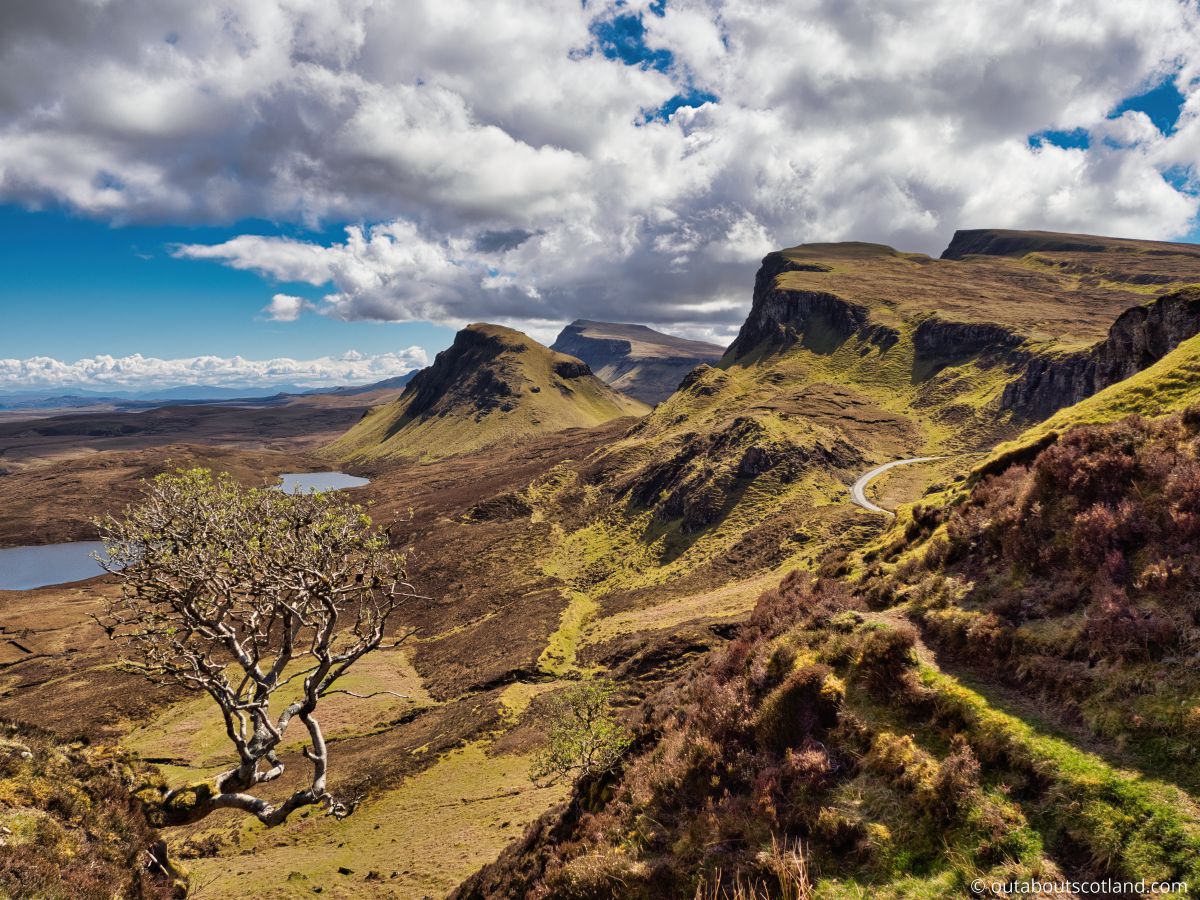
More Facts About Skye
19. Although Skye isn’t as highly-regarded as Islay when it comes to whisky production, it does boast one of Scotland’s top distilleries thanks to the Talisker plant which overlooks Loch Harport on the western side of the island.
The alcohol mega-company Diageo, which produces more than three million bottles of Skye single malt annually, owns Talisker. Talisker is the second-most popular drink in Diageo’s lineup (only Singleton outsells it in terms of sales).
Talisker was the only distillery on Skye up until recently, but Torabhaig on the southern side of the Sleat Peninsula has since joined it. One thing that’s unusual about Torabhaig is that it has a total of nine distillers, compared to the lone master distiller found at almost every other distillery in Scotland. What’s even more unusual is that none of the distilling team had even worked in a distillery before joining Torabhaig, and they’re all learning the trade from scratch!
20. It’s becoming increasingly difficult to see the Northern Lights – AKA the Aurora Borealis – due to the effects of light pollution, but there are a few places in Scotland that are remote enough to offer good views of the ‘mirrie dancers’.
One of the most popular locations is Glendale near the famous Neist Point lighthouse on the island’s furthest northwest peninsula. There are very few settlements in this area so nighttime is an almost perfect inky black, although due to the latitude the Northern Lights are quite faint.
To see the lights at their best, you therefore need to capture them with a camera using a long exposure, but not in the summer. From June to July, Glendale does not see complete darkness at all due to the fact that the sun doesn’t quite fall below the horizon.
Frequently Asked Questions
What is the Island of Skye known for?
The Isle of Skye is famous for its landscapes which are widely regarded as the most beautiful in Scotland. Highlights include the Quiraing on the Trotternish Ridge as well as the Storr, the Fairy Glen, and the Fairy Pools.
Skye is also famous for its historic attractions including Armadale Castle and Dunvegan Castle, and natural wonders like the Kilt Rock waterfall and the dinosaur footprints on An Corran beach.
Is the Isle of Skye a must?
The Isle of Skye is an absolute must for visitors on a tour of Scotland. Getting there is easy thanks to the Skye Bridge at Kyle of Lochalsh, and the island can be accessed from Edinburgh or Glasgow in just 4 hours.
Tourists have a wide choice of attractions to visit, and there are lots of activities to take part in, including hill walking in the Cuillin mountains, coastal walks, exploring castles, and visiting nearby Raasay.
How long does it take to drive around the Isle of Skye?
It will take around 3 hours to drive the A87 from the Skye Bridge to Sligachan, then to Portree and around the Trotternish peninsula.
Driving the A851 along the Sleat peninsula takes one hour from the Skye Bridge, and driving from the Skye Bridge to Glendale on the north-west of the island takes 2 hours.
Is the Isle of Skye touristy?
The Isle of Skye is very touristy, and in fact it’s one of the busiest places in Scotland, especially in summer. Each year more than 650,000 tourists visit Skye, and some attractions like the Fairy Pools have to cope with upwards of 200,000 visitors annually.

